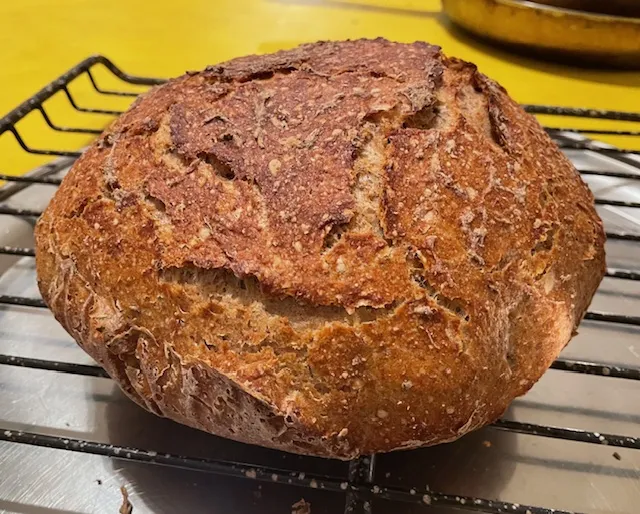Sourdough Bread-Prebiotic Leaven ~100%Whole Wheat

Today's bake: Sourdough Bread-Prebiotic Leaven ~100%Whole Wheat
Source: CalBeachBaker
Notes: 3 loaves
2 @1250g, Pan Size: 7.88x4x4 In / 20x10.16x10.16 CM
1@ 2500g, Pan Size: 15.75x4x4 In / 40.01x10.16x10.16 CM)
Substitutions: None
- Log in or register to post comments
- 4 comments
- View post
- CalBeachBaker's Blog






